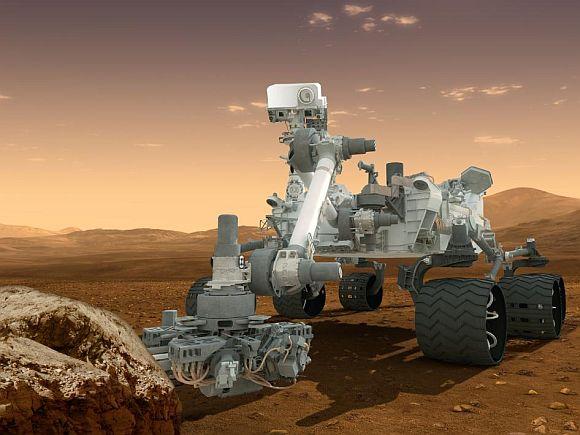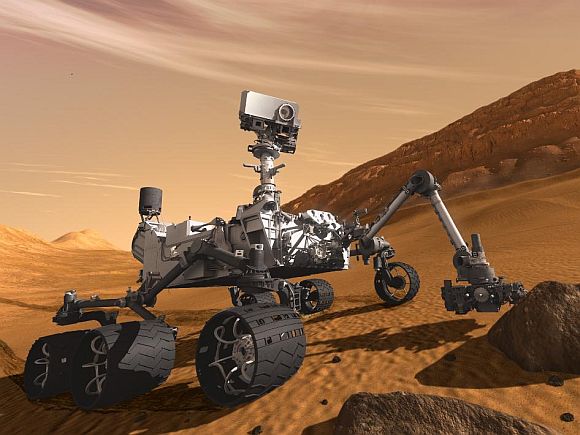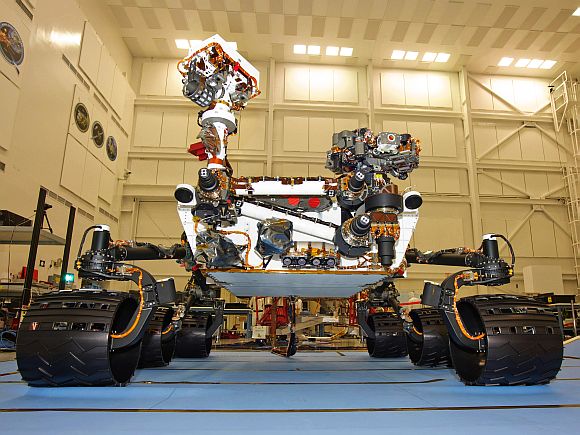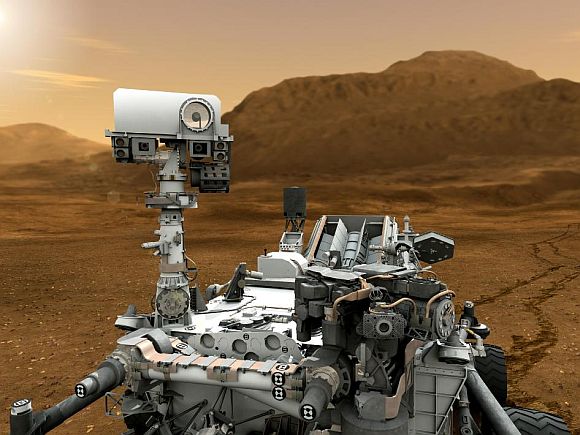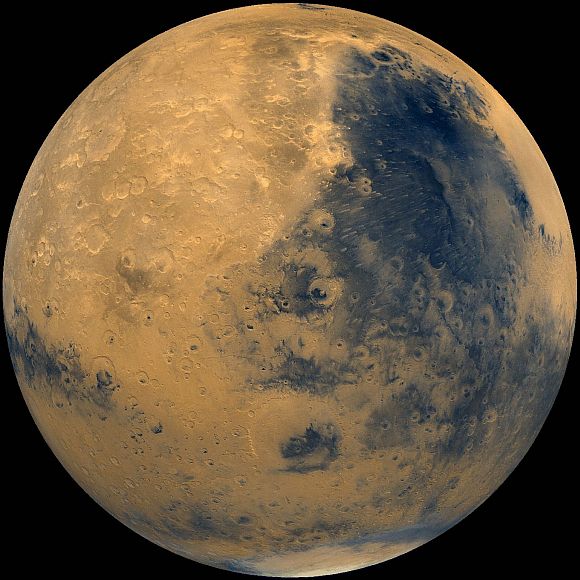 | « Back to article | Print this article |
5 amazing things about Curiosity, the Mars rover
Curiosity, the car-size, one-ton rover of American space agency NASA is bound for arrival on Mars on August 6.
The landing will mark the beginning of a two-year prime mission to investigate one of the most intriguing places on Mars.
During the 23 months after landing, Curiosity will analyse dozens of samples drilled from rocks or scooped from the ground as it explores with greater range than any previous Mars rover.
Curiosity will carry the most advanced payload of scientific gear ever used on Mars' surface, a payload more than 10 times as massive as those of earlier Mars rovers.
Click on NEXT to read more about this rover...
Size matters
Size Matters
The Mini Cooper-sized rover is much bigger than its rover predecessors, Spirit, Opportunity and Sojourner.
Curiosity is twice as long (about 2.8 meters, or 9 feet) and four times as heavy as Spirit and Opportunity, which landed in 2004.
Sojourner, about the size of a microwave oven, landed in 1997 as part of the Mars Pathfinder mission.
Click on NEXT to go further...
The toolkit
The toolkit
Curiosity will use 10 science instruments to examine rocks, soil and the atmosphere.
A laser will vapourise patches of rock from a distance, and another instrument will search for organic compounds.
Other instruments include mast-mounted cameras to study targets from a distance, arm-mounted instruments to study targets they touch, and deck-mounted analytical instruments to determine the composition of rock and soil samples acquired with a powdering drill and a scoop.
Click on NEXT to go further...
Big Wheels
Big Wheels
Each of Curiosity's six wheels has an independent drive motor.
The two front and two rear wheels also have individual steering motors. This steering allows the rover to make 360-degree turns in-place on the Mars surface.
The wheels' diameter is double the wheel diameter on Spirit and Opportunity, which will help Curiosity roll over obstacles up to 75 centimeters (30 inches) high.
Click on NEXT to go further...
Power Source
Power source
The rover's electricity will be supplied by a nuclear power battery. The multi-mission radioisotope thermoelectric generator produces electricity from the heat of plutonium-238's radioactive decay.
This long-lived power supply gives the mission an operating lifespan on Mars' surface of a full Mars year (687 Earth days) or more. At launch, the generator will provide about 110 watts of electrical power to operate the rover's instruments, robotic arm, wheels, computers and radio.
Warm fluids heated by the generator's excess heat are plumbed throughout the rover to keep electronics and other systems at acceptable operating temperatures.
Click on NEXT to go further...
Unlock Mars
Unlock Mars
Curiosity is one of the missions in a series of explorations intended to unlock the history of Mars. Curiosity is designed for conducting an in-depth investigation of Mars' past or present ability to sustain microbial life.
In essence, the mission is to determine the planet's "habitability".
Curiosity will carry the biggest, most advanced suite of instruments for scientific studies ever sent to the martian surface. The rover will analyze dozens of samples scooped from the soil, drilled from rocks, and pulled from the atmosphere. The record of the planet's climate and geology is essentially "written in the rocks and soil" -- in their formation, structure and chemical composition.
The rover's onboard laboratory will study the samples and the local geologic setting in order to detect chemical building blocks of life (eg, forms of carbon) on Mars. It will assess what the martian environment was like in the past, addressing the fundamental question, "Was Mars ever a habitat for microbial life?"
Click on NEXT to go further...
